
SURE, he got to race with Peter Brock, and yes he won Bathurst, at his very first attempt, but when Tomas Mezera put his life on the line as a “young and stupid” boy − fleeing communist Czechoslovakia to sleep rough on the streets of Austria, and celebrating his 21st in a violent and terrifying refugee camp − he was dreaming of something more.
“For me, it was all about getting to Formula 1, and even when I ended up sleeping in parks, and nearly freezing to death, well, I believed I would make it. But you know, you’re young and you’re stupid and you think you can do anything,” Mezera, now 59, chuckles, with some rue.
“After sleeping rough, the refugee camp was like the Hilton, because at least you got a bed, but there were about 40 of us in a room, and it was not unusual that people got killed in there, because you had all these different religions.
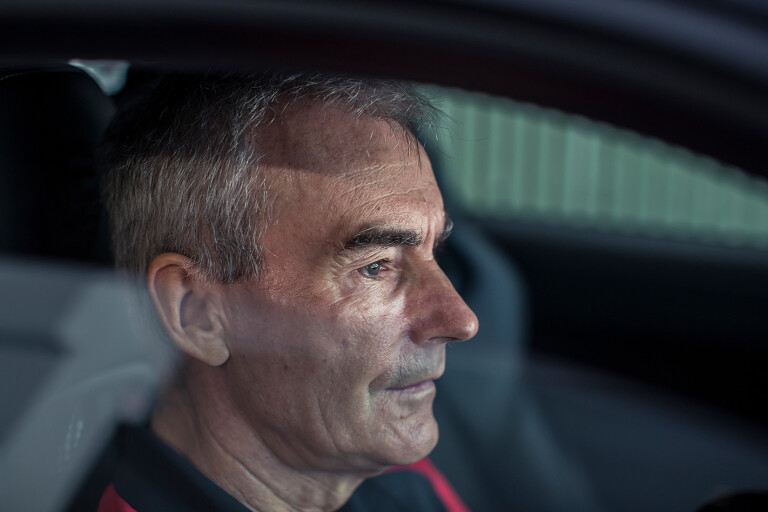
“I remember the Albanians smuggled a machine gun in, and there was a bit of a massacre against the Croats.
“You grow up quickly in there, and you’re a bit careful to make mates. I never bloody trusted anyone, and I’m still the same.”
If you’ve met Mezera, as the many thousands of fortunate people who’ve been through the Porsche Sport Driving School he runs have, you’d know he’s a no-nonsense, straight-talking not-quite-old bastard, with a chiding, deriding wit, a clipped accent and a sense of humour so sharp it can cut the unwary into tiny pieces.
Everybody associates him with Brock − their surnames shared a windshield on racing Holden Commodores for many years − and he’s certainly colourful and unfiltered when he’s asked about those days, but it’s his own past, and how at peace he is with the highs and lows he’s experienced, that makes him truly fascinating.
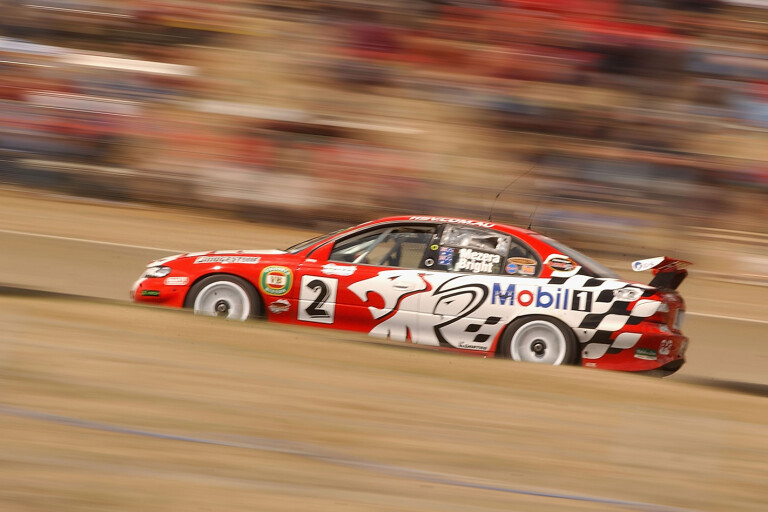
It’s also hard not to hate him, because he’s just so bloody good at whatever he turns his gifted hands to. In later life, he’s taken up golf, and not just socially, but at a level where he’s semi-pro, playing on the Seniors Tour against Ian Baker Finch, Wayne Grady and Peter Senior.
“About seven years ago I went to the Tour school to get on the PGA Seniors Tour, and I did that, I assed it in. I played three rounds, finished second, and I’ve been on the Tour for five years,” he says.
“There are 60 events a year and I play in about half of those, and if I ass it in I make enough money to pay for my expenses. I wouldn’t say I’m bloody good at it − I’d like to get better − but golf is a fair game; you all play with the same ball. It’s not like motorsport, where the more money you have, the faster you go.”
Before motorsport, of course, there was tennis, and skiing, both of which he was sufficiently good enough that, as “a kid growing up in Czecho” he was feted by the then-communist state, which eventually asked him to make a choice. He picked skiing, with one eye on the Winter Olympics.
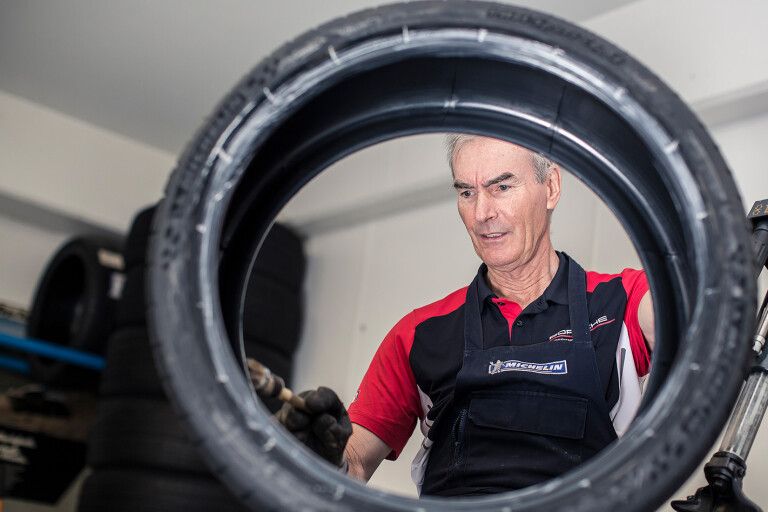
“One good thing about communist countries was the sporting programs − if you were a little bit good then you had the support from the country,” Mezera recalls.
“For me I had privileges; in winter I didn’t have to go to school, I was skiing every day. There were 20 of us like that, classed as high-level sportsmen, and everything was owned by the government − the ski resorts, the lifts, all that bullshit − so I had a free ski pass to everywhere.”
A career of bringing glory to the communist state was on offer, but unfortunately Mezera had fallen in love with a different kind of speed − motor racing.
“For me it always was the aim when I got old enough, I wanted to do car racing, I was just mad about it,” he recalls. “You wouldn’t see a lot of racing on TV in communist Czecho, only what you read in the papers, but my dream was always to try to get into F1, which I bloody failed.”
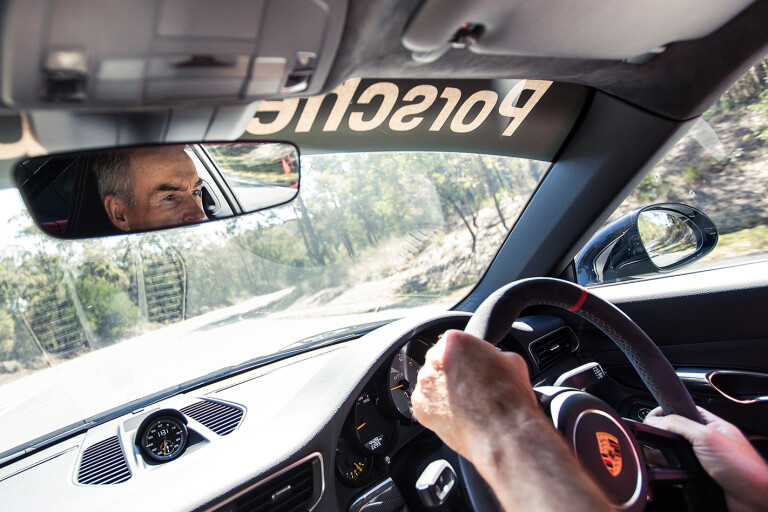
While Mezera says he had a great time skiing, he “got the shits” as soon as he turned 18, because the authorities wouldn’t let him leave the country, even to train in the Alps, because his father’s cards had been marked for attending anti-communist meetings, so Tomas was blacklisted as well.
Frustrated, he and a friend built a 1000cc Skoda into a rally rocket, which he says is still the fastest car he’s ever driven, because it felt so quick.
“I entered some hill climbs in that thing, and I came second in my very first race, and won the next one, and I was hooked. Four months a year I’d drive my Dad’s car in the snow and I was mad, I was lucky I didn’t kill myself, and other people, but it gave me a good feel for a motor car,” he chuckles.
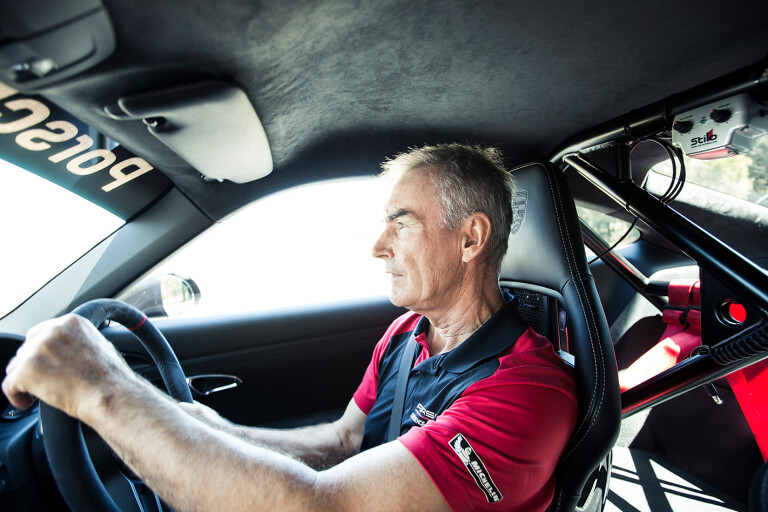
Mezera knew he had to slip his communist shackles, and so, in 1979, he made a run for it, hitching a ride across the border, sleeping in parks and eventually making it to a refugee camp in Austria, where he applied for political asylum.
His belief was that a move to the US would make him rich, but it soon became clear that he’d be stuck in limbo for years to get there, and then someone mentioned Australia.
“At the time, I knew Alan Jones was doing well; he was winning F1 races, and I thought, well, maybe it’s worth going there.”
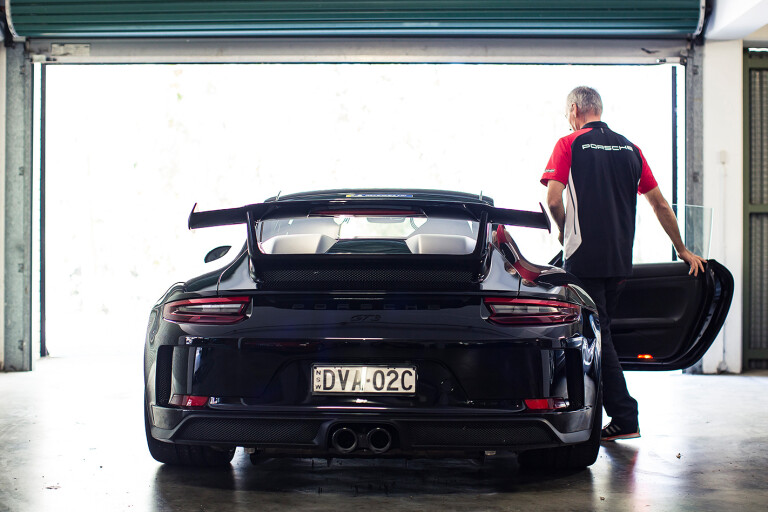
Mezera arrived in Sydney in 1979, unable to speak a word of English, and took on any job he could find, often working three at once, all to save money to buy a cheap, second-hand Formula Ford to go racing. By 1982, he eventually snaffled one for $5000, about a third the price of a properly competitive car.
“Every time it was on the track it was a miracle if nothing broke and it finished; I was always at the back because it was a shitbox, but I did enough to get noticed,” he recalls.
A sponsorship opportunity arose and in 1985 he won the Australian Championship, the prize being a trip to Europe and a whopping $1000 in cash.
This was his big chance, and Mezera grabbed it, quickly scoring a works drive for Reynard and finally making it to the almost-big time. He was now racing against the stars of the future, including Eddie Irvine (“I was so sick of that bloke, he kept beating me, I reckon six times I finished second to him”) and Johnny Herbert.
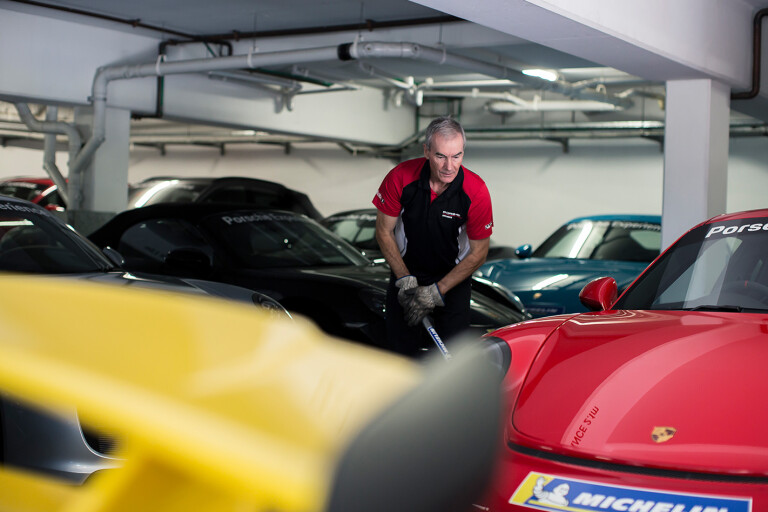
In 1987, racing in the UK, he was up against it in a not-quite-there car, but still managed to finish the season second, behind Irvine, who famously went on to greater things, playing second Irish fiddle to Michael Schumacher at Ferrari.
“The problem was that your best years for racing are between 19 and 25, and I wasted those days in a refugee camp and working three jobs trying to make money,” Mezera calculates, with only a hint of bitterness. “I said I’d give myself until I was 30 in England, to make a go of it, but I was just too old to make it in single-seaters.
“In 1988, I drove so many things, every formula to touring cars, picking up the odd F3 race, and then I came back for Sandown and Bathurst and we assed it in.”
As usual, Mezera is talking himself down, because winning Bathurst at your first top-flight attempt is an almost super-human feat, particularly in the Ford Sierra RS500 he and co-driver Tony Longhurst were strapped into.
“I wasn’t comfortable in those Sierras, they were undriveable, they were pricks of things. They had so much bloody turbo lag, you never got the power when you needed it,” he says, sounding genuinely annoyed, even decades later.
“In 1988, when I jumped in it at Sandown, I honestly couldn’t drive it; I was going sideways; couldn’t keep it on the road. In the Sandown 500, my first race in the car, we did all right, but the tailshaft broke on the start line with Tony in the car.
“Then we went to Bathurst. Honestly, the car was more intimidating than the track, but I reckon we got lucky there.”
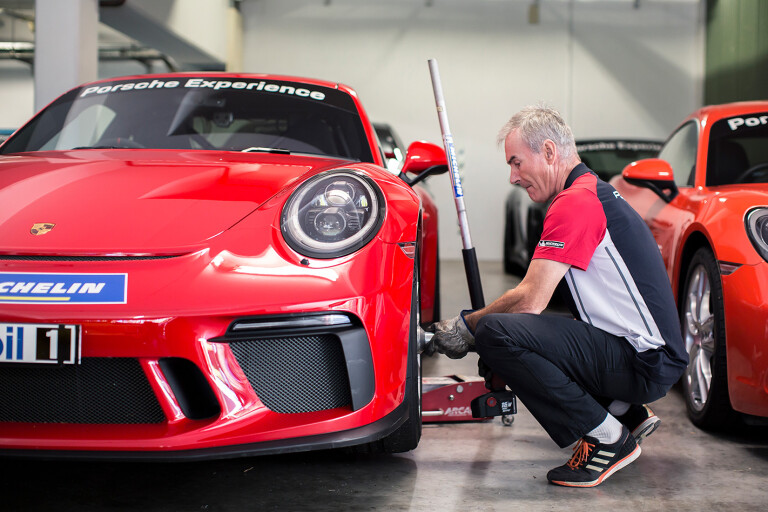
After that start, a career racing in Australia seemed inevitable, and he eventually found his way to the Holden Racing Team, where he raced with part man, part legend Peter Brock, trying and failing to win Bathurst with him from 1994 to 1996.
“Three times I drove with him there, and three times he f__ked it up,” Mezera groans.
“When I got to drive with Brock he was an old man [Brock was 51 in 1996, 13 years Mezera’s senior], and we got on, but – and he would never admit it – he wasn’t fit enough. In those days we had no power steering, the cars were actually very physical to drive, much harder than now.
“I mean, he was still quick; don’t get me wrong. He could put a lap together, but he couldn’t put 30 laps together, because he wasn’t fit enough; he would lose concentration.
“Honestly, I wish I would have driven with him in his 30s; he was on top of it then. Absolutely.”
There are various other mutterings, longer stories, things Mezera would not be quoted on, at least partly because he knows what Brock fans are like, and suggests they might come around and burn down his house. Suffice to say that he had to deal with a man so convinced of his own greatness that he could, at least in his own eyes, do no wrong, and “would never admit he made a mistake”.
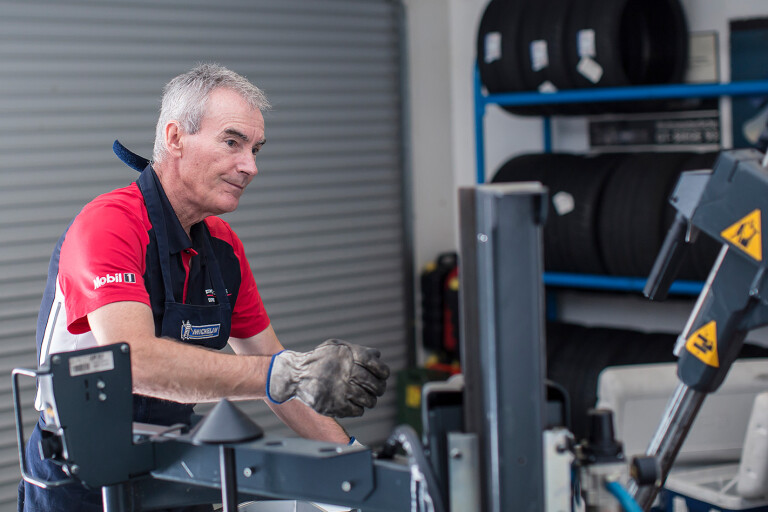
“This one time, at Bathurst, he came in six laps before the scheduled stop; I wasn’t even ready. I had to jump in the car and it was lit up like a Christmas tree, every warning light was on and you could smell the burnt oil in the car. Meanwhile Brock grabs the first TV crew he sees and says, ‘Yep, the car’s running well, it’s fantastic, we’ve got a good chance now ... Tomas just has to bring it home.’” Of course the car shit itself on me,” Mezera says, almost more amused than annoyed.
After he was finally shuffled out of HRT in 1996, being forced to make way for Craig Lowndes – a bloke he’d talent-spotted and helped to develop – rather than the older Brock, who he’d expected to make way for him. Mezera was at something of a loss.
Helping out on a few Porsche drive days led to him running the whole show by 2004, and he’s been a respected and hilarious boss ever since.
Mezera’s reluctance to actually get in the car and sit in the passenger seat next to paying customers, or over-enthusiastic journalists, is legendary, but he reckons he still mans up ... now and then.

"I do still jump in the [students’] cars, but I’ve got 14 instructors working for me – including Lukey Youlden who finally won Bathurst last year – so I let them do it, and I always keep saying the good thing about this job is that the customer is not always right,” he laughs.
“I tell the boys, don’t be obliged to stay in the car if someone’s not safe – stop the car and get out. Unfortunately, people don’t realise how fast they’re going until something goes wrong.
“On the other hand, we’re very lucky with the customers we get here. It’s quite expensive – it can be $4000 a day; some of these people will spend $20,000 in a week – and so we get smart people, and 99 percent of them do come here to learn. They love it.

“And it’s very satisfying when people have improved five seconds a lap by the end of the day. Some people get absolutely hooked. We have one customer who started with us, probably about 10 years ago, and now he’s doing his first laps in a Carrera Cup car. He was five seconds off the pace, and now he does three programs every year, and these days he jumps in the car and he’s within two seconds of our times, and he absolutely loves it.”

COMMENTS